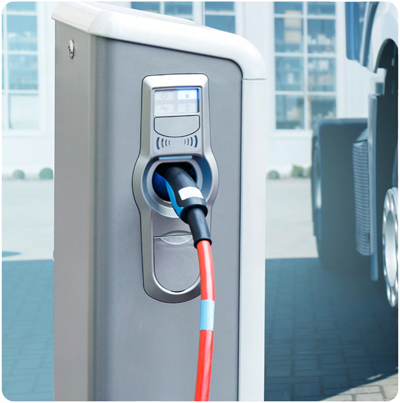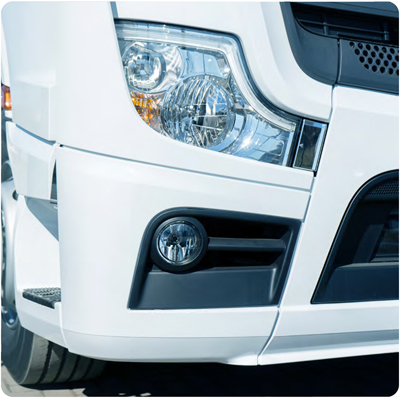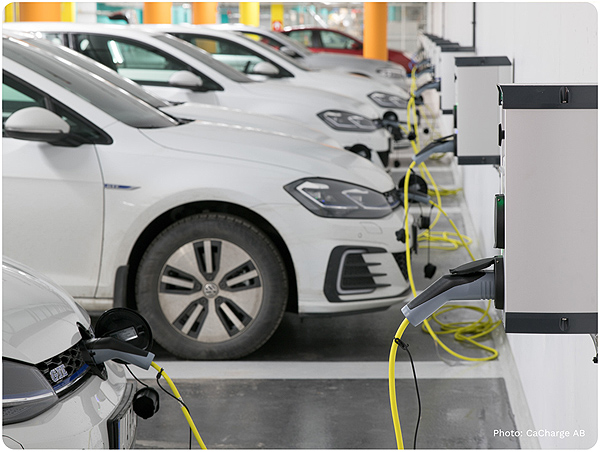 Today, major automotive players such as Volvo, Scania and Tesla are rapidly developing battery electric vehicle (BEV) trucks for long-haul transport. More importantly, some of these are already taking sales orders. But a lack of charging infrastructure and urgency to tackle it could stand in the way of an accelerated adoption of electric heavy-duty vehicles (HDVs). What lessons can we learn from electric passenger vehicles and what is the way forward to develop a robust charging infrastructure?
Today, major automotive players such as Volvo, Scania and Tesla are rapidly developing battery electric vehicle (BEV) trucks for long-haul transport. More importantly, some of these are already taking sales orders. But a lack of charging infrastructure and urgency to tackle it could stand in the way of an accelerated adoption of electric heavy-duty vehicles (HDVs). What lessons can we learn from electric passenger vehicles and what is the way forward to develop a robust charging infrastructure?
Only a few years ago, cost, charging and range anxiety were all valid arguments against electric vehicles (EVs). And yet, there has been a recent and surprisingly fast transition to electric passenger cars. Charging infrastructure has developed in tandem, thanks to market leaders such as Tesla and joint ventures like Ionity. With 370 different EV models on the market, cost has come down significantly, home charging is now the norm and infrastructure already exists throughout Europe to make longer road trips in EVs completely viable.
No way back
The tipping point for EVs has passed. The International Energy Agency reported that despite the effects of the Covid-19 pandemic, EV sales in the first quarter of 2021 were more than 2.5 times higher than the same period last year. The business-as-usual projection sees the number of EVs on roads worldwide increasing from 11 million today to 124 million by 2030. This will be significantly larger if governments further support the uptake.
These numbers largely represent passenger vehicles but recent developments show this trend also for light-duty vehicles (LDVs), construction vehicles, long-haul transporters and HDVs. This is especially important because CO2 emissions from the transportation sector are roughly split evenly between passenger vehicles and HDVs. Battery electric HDVs are therefore a key part in decarbonising the transportation industry in Europe.
 Charging is the challenge
Charging is the challenge
A few years ago, test routes for electrified highways started popping up across Europe and a lot of discussion ensued if this would be the future of long-haul heavy-duty transport. In just as much time, gains in the battery electric drivetrain have shifted the discussion almost entirely to battery electric HDVs. It is easier to equip highways with fast charging infrastructure than to build an electric road, but this comes with its own challenges.
Heavy duty, long haul and electric – is it even possible?
To develop successful charging infrastructure for HDVs, solutions need to leverage how trucks already operate. At a regional level, charging points can be easily implemented at the terminals, ports, warehouses and adjacent cities that trucks move between.
For long-haul transportation, a common set of EU rules for maximum driving times and frequency and duration of rest times for truck drivers might just be the hidden cheerleader. Drivers are required to take a break of at least 45 minutes after 4.5 hours of driving time, providing an excellent charging opportunity. Because of the relatively short driving time, heavy batteries can be avoided. First signals from automotive companies such as Volvo show that this is where they are placing their bets, with most truck manufacturers focusing largely on improving the battery drivetrain.
However, it is necessary to find a way to connect and charge the trucks and deal with the massive increased power demand on the grid. This can only be achieved through policies, subsidies and collaboration. Several parties need to be involved to make this happen – the OEMs, those delivering charging stations, the rest stop owners and the DSOs that need to provide the capacity.
 Lessons learned from passenger EVs
Lessons learned from passenger EVs
While home charging is not considered an obstacle anymore, city dwellers face a slightly more complex reality. But solutions in this area provide a good blueprint for HDV charging. Collaborative models between the city, DSOs and charging infrastructure suppliers have proven successful in Amsterdam and Berlin, where private actors have bid on charging infrastructures through auctions, gaining exclusive rights for certain areas. The market is also responding with various solutions cropping up. The Swedish-based company CaCharge for example, offers real estate and parking companies, municipalities and tenant-owner associations profitable and cost-effective charging stations using the entire parking time to efficiently distribute power between cars. As a result, many cars can be charged without expensive load peaks.
While charging infrastructure for heavy-duty long-haul trucks won't be solved commercially and subsidies are certainly needed to build it out, taking the lesson from passenger vehicles and encouraging collaboration between OEMs, truck stops and the utility companies is crucial.
Another complementary solution is grid connection via buffer battery, reducing the size of the connection to the grid. The buffer battery is stationed at the rest stop, charged slowly at a low power, and trucks then charge from the battery rather than a charging station.
Collectively growing the market
Will we be seeing BEV HDVs as the mainstream in the next decade? Perhaps. But that depends greatly and urgently on policies and government subsidies that promote investment in fast-charging infrastructure as well as collaboration at all levels. Regional roll-outs will happen in the very near future but to pave the way for long-haul BEV HDVs more needs to be done. If the right subsidies are in place and collaboration is happening, we could already have some routes equipped within a year that could support a limited number of trucks. However if all stakeholders do not come together and act fast enough, very soon we will see increased market demand for BEV HDVs but the inability to charge them at scale.

Contact details:
Johan Söderbom
Thematic Leader for Smart Grids and Energy Storage
EIT InnoEnergy
Email: johan.soderbom@innoenergy.com
Web: www.innoenergy.com